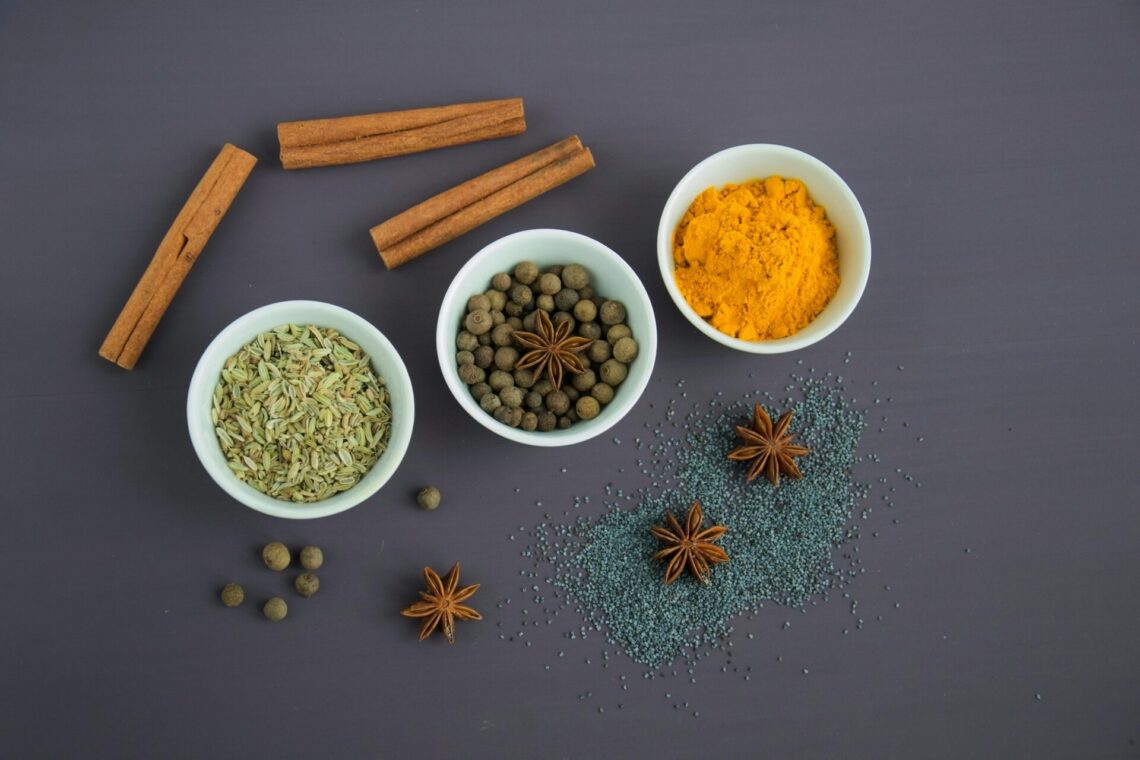
Brew Your Way to Better Health: Top Ayurvedic Kadha Recipes
In the bustling world of wellness trends, Ayurveda stands out as an ancient system of holistic healing that has withstood the test of time. Among its many treasures is Kadha, a traditional herbal concoction that has been cherished for centuries in Indian households for its medicinal properties. Kadha is typically made by boiling various herbs, spices, and other natural ingredients in water to extract their medicinal properties. Let’s dive into the world of Ayurvedic Kadha and quip you with a collection of easy-to-follow Kadha recipes you can whip up at home! So, grab your favorite mug, gather your spices, and get ready to brew your way to better health with the power of Ayurvedic Kadha!
Understanding Ayurvedic Kadha
Ayurveda, the ancient Indian system of medicine, emphasizes the balance of mind, body, and spirit for optimal health. Central to Ayurvedic principles is the concept of “doshas,” which represent the three fundamental energies believed to govern human physiology: Vata, Pitta, and Kapha. According to Ayurveda, an imbalance in these doshas can lead to various health issues.
Ayurvedic kadha, also known as herbal decoction or tea, is a time-tested remedy deeply rooted in Ayurvedic principles. It consists of a synergistic blend of herbs, spices, and other natural ingredients, carefully chosen to restore balance and promote health. Kadha is believed to help boost immunity, improve digestion, detoxify the body, and provide relief from cold, cough, and other respiratory ailments. Kadha is traditionally prepared by simmering these ingredients in water or milk, extracting their beneficial compounds through the process of decoction.
The key ingredients traditionally used and their associated health benefits
- Tulsi (Holy Basil): Tulsi is revered in Ayurveda for its medicinal properties. It is known to boost immunity, promote respiratory health, and relieve stress and anxiety.
- Ginger: Ginger is valued for its anti-inflammatory and digestive properties. It can help soothe sore throat, alleviate nausea, and aid in digestion.
- Turmeric: Turmeric contains curcumin, a compound with potent anti-inflammatory and antioxidant properties. It is believed to support overall health and immunity, as well as promote joint health.
- Cinnamon: Cinnamon is rich in antioxidants and has anti-inflammatory properties. It may help regulate blood sugar levels, improve circulation, and support heart health.
- Black pepper: Black pepper contains piperine, which enhances the bioavailability of other nutrients. It aids in digestion, promotes detoxification, and may have antimicrobial properties.
- Cloves: Cloves are known for their antiseptic and analgesic properties. They can help relieve toothaches, sore throat, and respiratory congestion.
- Cardamom: Cardamom is a natural detoxifier and digestive aid. It may help alleviate bloating, gas, and indigestion, as well as freshen breath.
- Honey: Honey is often added to Kadha for its soothing effect on the throat and its antimicrobial properties. It may also enhance the flavor of the beverage.
The potential Benefits of Ayurvedic Kadha:
The therapeutic benefits of Ayurvedic kadha are wide-ranging and can vary depending on the specific ingredients used and individual health conditions. Some of the key benefits include:
- Boosting Immunity: Many Ayurvedic herbs and spices used in kadha recipes are renowned for their immune-boosting properties. Ingredients like tulsi (holy basil), ginger, turmeric, and ashwagandha are known to enhance the body’s natural defense mechanisms, helping to ward off infections and illnesses.
- Relieving Cold and Flu Symptoms: Kadha is often consumed as a natural remedy for cold, cough, and flu symptoms. The warming and soothing properties of herbs like ginger, cinnamon, and cardamom help to alleviate congestion, reduce inflammation, and provide relief from respiratory discomfort.
- Aiding Digestion: Ayurvedic kadha can aid digestion and promote gut health. Ingredients such as cumin, fennel, and coriander possess carminative properties that help to relieve bloating, indigestion, and other digestive issues. Additionally, kadha stimulates the secretion of digestive enzymes, facilitating the process of nutrient absorption.
- Supporting Stress Relief: Certain herbs used in kadha, such as ashwagandha and brahmi, are renowned for their adaptogenic properties, which help the body adapt to stress and promote relaxation. Consuming kadha regularly can contribute to overall stress relief and mental well-being.
- Detoxification and Cleansing: Kadha recipes often include detoxifying herbs like triphala, neem, and guduchi, which aid in purifying the body and eliminating toxins. Regular consumption of kadha supports the body’s natural detoxification processes, promoting clearer skin, improved metabolism, and enhanced vitality.
Top Ayurvedic Kadha Recipes
1. Tulsi Ginger Kadha Recipe:
Ingredients:
- 1 cup water
- 5-6 fresh tulsi (holy basil) leaves
- 1-inch piece of ginger, sliced
- 1 teaspoon honey (optional)
Instructions:
- In a saucepan, bring water to a boil.
- Add tulsi leaves and ginger slices to the boiling water.
- Reduce the heat and let it simmer for 5-7 minutes.
- Strain the kadha into a cup.
- Add honey if desired for sweetness.
- Stir well and enjoy hot.
Tips to Prepare Tulsi Ginger Kadha:
- Use Fresh Ingredients: Fresh tulsi leaves and ginger will provide the best flavor and health benefits. If you can’t find fresh tulsi, you can use dried tulsi leaves, but adjust the quantity accordingly.
- Don’t Boil Too Vigorously: Maintain a gentle simmer while brewing the kadha to avoid losing the delicate flavors and medicinal properties of the ingredients.
- Adjust Sweetness: You can adjust the amount of honey based on your preference for sweetness. If you’re using it for medicinal purposes, you can omit the honey altogether.
- Experiment with Ratios: Feel free to adjust the ratio of tulsi to ginger based on your taste preferences and desired potency. Some people prefer a stronger ginger flavor, while others may prefer more tulsi.
- Add Lemon: For an extra boost of vitamin C and a slightly tangy flavor, you can squeeze a little lemon juice into the kadha before serving.
When to Have Tulsi Ginger Kadha:
- Boosting Immunity: Tulsi and ginger are both renowned for their immune-boosting properties. Enjoy a cup of Tulsi Ginger Kadha daily, especially during the colder months or when you feel like you’re coming down with a cold or flu.
- Digestive Aid: Ginger is excellent for digestion and can help alleviate nausea, bloating, and indigestion. Have a cup of Tulsi Ginger Kadha after meals to aid digestion or whenever you experience digestive discomfort.
- Stress Relief: Tulsi is known as an adaptogen, helping the body cope with stress. Enjoying a warm cup of Tulsi Ginger Kadha in the evening can help relax the mind and body, promoting a sense of calm and well-being.
- Respiratory Health: Both tulsi and ginger have expectorant properties, making Tulsi Ginger Kadha beneficial for respiratory conditions like coughs, colds, and congestion. Drink it warm to help soothe a sore throat and clear nasal passages.
2. Triphala Kadha Recipe:
Ingredients:
- 1 cup water
- 1 teaspoon Triphala powder
- 1 teaspoon honey (optional)
Instructions:
- Boil water in a saucepan.
- Add Triphala powder to the boiling water.
- Reduce the heat and simmer for 5–7 minutes.
- Strain the kadha into a cup.
- Add honey, if desired.
- Stir well, and drink warm.
Tips for Triphala Kadha:
- Choose High-Quality Triphala: Triphala is a blend of three fruits: Indian gooseberry (amla), black myrobalan (haritaki), and Indian gall nut (bibhitaki). Ensure you use good-quality Triphala powder for maximum benefits.
- Simmer Gently: Avoid boiling the Triphala Kadha vigorously, as it may degrade some of the active compounds. A gentle simmer is sufficient to extract the beneficial properties of Triphala.
- Strain Well: Triphala powder can be gritty, so make sure to strain the kadha thoroughly before drinking to remove any solid particles.
- Adjust Sweetness: The addition of honey is optional but can enhance the taste and make the kadha more palatable. Adjust the amount of honey according to your preference.
- Experiment with Flavors: You can add other spices like cinnamon or ginger for additional flavor and health benefits if desired.
When to Have Triphala Kadha:
- Digestive Health: Triphala is renowned in Ayurveda for its digestive properties. Drinking Triphala Kadha before meals can help stimulate digestion, regulate bowel movements, and alleviate constipation.
- Detoxification: Triphala is considered a potent detoxifier in Ayurveda. Consuming Triphala Kadha regularly, especially in the morning on an empty stomach, can support the body’s natural detoxification processes and promote overall cleansing and rejuvenation.
- Immune Support: Triphala is rich in antioxidants and has immune-boosting properties. Having Triphala Kadha daily can strengthen the immune system, making it more resilient to infections and illnesses.
- Eye Health: Triphala is traditionally used to support eye health and improve vision. Drinking Triphala Kadha regularly may help maintain optimal eye function and prevent eye disorders.
- General Well-being: Triphala is considered a Rasayana (rejuvenative) herb in Ayurveda, promoting longevity and vitality. Enjoying Triphala Kadha as part of your daily wellness routine can help maintain overall health and well-being
3. Cinnamon Cardamom Kadha Recipe:
Ingredients:
- 1 cup water
- 1 cinnamon stick
- 2-3 cardamom pods, crushed
- 1 teaspoon honey (optional)
Instructions:
- Bring the water to a boil in a saucepan.
- Add a cinnamon stick and crushed cardamom pods to the boiling water.
- Reduce the heat and let it simmer for 5-7 minutes.
- Strain the kadha into a cup.
- Add honey if desired for sweetness.
- Stir well and enjoy hot.
Tips for Cinnamon Cardamom Kadha:
- Quality of Ingredients: Use high-quality cinnamon sticks and cardamom pods for the best flavor and health benefits. Freshly crushed cardamom pods will release more flavor than pre-ground cardamom powder.
- Adjust the Ingredients: The intensity of flavor can vary based on personal preference. You can adjust the amount of cinnamon and cardamom to suit your taste.
- Gently Simmer: Avoid boiling the kadha too vigorously, as it may cause the flavors to become bitter. A gentle simmer allows the spices to infuse slowly into the water.
- Strain Thoroughly: Cinnamon and cardamom can leave behind small particles in the kadha. Make sure to strain the liquid thoroughly to remove any solid residues.
- Add Honey Wisely: Honey can enhance the flavor of the kadha and provide sweetness. Adjust the amount of honey based on your preferences and dietary considerations.
When to Have Cinnamon Cardamom Kadha:
- Digestive Aid: Cinnamon and cardamom both have digestive properties that can help alleviate indigestion, bloating, and gas. Enjoying a cup of Cinnamon cardamom kadha after meals can aid digestion.
- Warmth and Comfort: The aromatic blend of cinnamon and cardamom makes this kadha perfect for cold winter days or whenever you need a comforting beverage to warm you up.
- Relaxation: The soothing aroma of cinnamon and cardamom can help relax the mind and body. Sipping on Cinnamon Cardamom Kadha in the evening can promote relaxation and reduce stress.
- Respiratory Health: Both cinnamon and cardamom have antimicrobial properties that can help support respiratory health. Drinking this kadha may help soothe a sore throat and relieve congestion.
- General Well-Being: Cinnamon and cardamom are rich in antioxidants and have various health benefits. Enjoying cinnamon, cardamom, and kadha can contribute to overall health and well-being.
4. Ashwagandha Kadha Recipe:
Ingredients:
- 1 cup milk or water
- 1 teaspoon ashwagandha powder
- 1/2 teaspoon cinnamon powder
- 1/2 teaspoon ginger powder
- 1 teaspoon honey (optional)
Instructions:
- Heat milk or water in a saucepan.
- Add ashwagandha powder, cinnamon powder, and ginger powder to the milk/water.
- Let it simmer for 5–7 minutes.
- Strain the kadha into a cup.
- Add honey if desired for sweetness.
- Stir well, and drink warm.
Tips for Ashwagandha Kadha:
- Quality of Ashwagandha: Choose high-quality Ashwagandha powder from a reputable source for the best results. Organic and sustainably sourced ashwagandha is preferable.
- Milk or Water: You can use either milk or water as the base for your kadha, depending on your preference and dietary restrictions. Milk adds creaminess and richness to the kadha, while water keeps it lighter.
- Spices: Cinnamon and ginger not only enhance the flavor of the kadha but also complement the properties of ashwagandha. Adjust the amount of spice according to your taste preferences.
- Sweeteners: Honey adds natural sweetness to the kadha and can help balance the flavors. However, if you prefer not to use honey, you can omit it or use other sweeteners like maple syrup or jaggery.
- Simmer Gently: Avoid boiling the kadha too vigorously to prevent the milk from scalding or curdling. A gentle simmer allows the flavors to meld together without overheating.
When to Have Ashwagandha Kadha:
- Stress Relief: Ashwagandha is known as an adaptogenic herb that helps the body cope with stress and promotes relaxation. Drinking Ashwagandha Kadha in the evening can help calm the mind and support restful sleep.
- Immune Support: Ashwagandha has immune-boosting properties that can help strengthen the body’s defences against infections and illnesses. Having Ashwagandha Kadha regularly may help support overall immune health.
- Energy and Vitality: Ashwagandha is traditionally used to boost energy levels and enhance vitality. Drinking Ashwagandha Kadha in the morning or before physical activity can help increase stamina and endurance.
- Hormonal Balance: Ashwagandha is believed to support hormonal balance, particularly in women. Consuming Ashwagandha Kadha regularly may help alleviate symptoms of hormonal imbalances such as fatigue, mood swings, and irregular periods.
- Muscle Recovery: Ashwagandha has anti-inflammatory properties that can help reduce muscle soreness and promote faster recovery after exercise or physical exertion. Drinking Ashwagandha Kadha post-workout may aid in muscle recovery and repair.
5. Turmeric Kadha Recipe:
Ingredients:
- 1 cup water
- 1 teaspoon turmeric powder
- 1-inch piece of ginger, sliced
- 1/2 teaspoon black pepper
- 1 teaspoon honey (optional)
Instructions:
- Boil water in a saucepan.
- Add turmeric powder, sliced ginger, and black pepper to the boiling water.
- Reduce the heat and let it simmer for 5–7 minutes.
- Strain the kadha into a cup.
- Add honey if desired for sweetness.
- Stir well and enjoy warm.
Tips for Turmeric Kadha:
- Quality of Turmeric: Choose high-quality turmeric powder from a reputable source for the best flavor and health benefits. Look for organic turmeric powder if possible.
- Fresh Ginger: Fresh ginger adds a delightful flavor and aroma to the kadha. Use a sharp knife to slice the ginger thinly for a better infusion of flavors.
- Black Pepper: Black pepper enhances curcumin’s bioavailability, the active turmeric compound. Including black pepper in the kadha helps increase the absorption of turmeric’s beneficial properties.
- Honey: Honey adds sweetness to the kadha and can help balance the strong flavors of turmeric and ginger. Use raw, unprocessed honey for maximum health benefits.
- Simmer Gently: Avoid boiling the kadha too vigorously to prevent the flavors from becoming bitter. A gentle simmer allows the spices to infuse slowly into the water.
When to Have Turmeric Kadha:
- Immune Support: Turmeric is rich in antioxidants and has immune-boosting properties. Drinking Turmeric Kadha regularly can help strengthen the immune system and protect the body against infections and illnesses.
- Anti-inflammatory: Turmeric has potent anti-inflammatory properties that can help reduce inflammation in the body. Consuming Turmeric Kadha may help alleviate symptoms of inflammatory conditions such as arthritis, joint pain, and inflammatory bowel diseases.
- Digestive Aid: Turmeric stimulates digestion and helps alleviate digestive discomfort such as bloating, gas, and indigestion. Drinking Turmeric Kadha after meals can aid digestion and promote gastrointestinal health.
- Detoxification: Turmeric supports liver function and aids in detoxification. Having Turmeric Kadha regularly may help cleanse the liver and promote overall detoxification of the body.
- Overall Well-Being: Turmeric is considered a Rasayana (rejuvenating) herb in Ayurveda and is believed to promote longevity and vitality. Enjoying Turmeric Kadha as part of your daily wellness routine can contribute to overall health and well-being.

Note: These Kadha are generally safe for most people, it’s always a good idea to consult with a healthcare professional, especially if you have any underlying health conditions or are pregnant or nursing. Enjoy the soothing and healing benefits of these Ayurvedic beverage as part of your daily wellness routine.
Tips for Brewing the Perfect Kadha
Kadha, a traditional Indian herbal tea, is known for its medicinal properties and is often brewed to boost immunity and alleviate common cold and flu symptoms. Here are some tips for brewing the perfect kadha:
- Choose High-Quality Ingredients: Select fresh, organic herbs, spices, and other ingredients for maximum flavor and potency. If possible, use whole spices and herbs rather than pre-ground or processed ones.
- Use Filtered Water: Start with clean, filtered water to brew your Kadha. The quality of the water can greatly influence the taste and health benefits of the final drink.
- Crush or Grind the Ingredients: To release the maximum flavor and medicinal properties of the herbs and spices, crush or grind them before adding them to the kadha. This helps extract the essential oils and active compounds more effectively.
- Proper proportions: While there are no strict rules, maintain a good balance of ingredients. You can adjust the quantities based on personal preference and desired potency. As a general guideline, use about 1-2 teaspoons of dried herbs or spices per cup of water.
- Simmer, Don’t Boil: Avoid boiling the Kadha vigorously, as this may cause some delicate herbs and spices to lose their potency. Instead, bring the water to a boil and then reduce the heat to a gentle simmer.
- Cover While Simmering: Cover the pot or saucepan while the Kadha is simmering to trap the flavors and essential oils of the herbs and spices.
- Steep for Sufficient Time: Allow the herbs and spices to steep in the hot water for at least 5–10 minutes to extract their beneficial compounds fully. You can simmer for longer if you prefer a stronger flavor.
- Strain Before Serving: Once the Kadha has simmered for the desired duration, strain it to remove any solid particles or residue. You can use a fine mesh strainer, cheesecloth, or tea infuser for this purpose.
- Add Sweeteners if Desired: If you prefer your Kadha sweet, you can add natural sweeteners like honey, maple syrup, or jaggery after straining. Stir well to dissolve the sweetener evenly.
- Enjoy Hot or Warm: Ayurvedic Kadha is typically consumed hot or warm for maximum comfort and effectiveness. Sip slowly and savour the flavors while it’s still steaming.
- Store Properly: If you have leftover Kadha, you can store it in the refrigerator for up to a day. Reheat gently before serving, and avoid reheating multiple times to preserve its freshness and potency.
Conclusion:
Ayurvedic Kadha is not just a remedy for illnesses but also a preventive measure to maintain good health. You can incorporate it into your daily routine by sipping on a cup every morning or evening. Adjust the ingredients according to your body’s needs and preferences.
Ayurvedic Kadha offers a natural and holistic approach to health and wellness. With its plethora of benefits and delicious flavors, it’s no wonder that Kadha has stood the test of time. So, brew your way to better health with these top Ayurvedic Kadha recipes and experience the transformative power of this ancient elixir. Cheers to your well-being!


You May Also Like

Exploring the Doshas: Kapha in Ayurveda
23 August 2023
Exploring the Doshas: Understanding Your Unique Body Type in Ayurveda
30 June 2023

